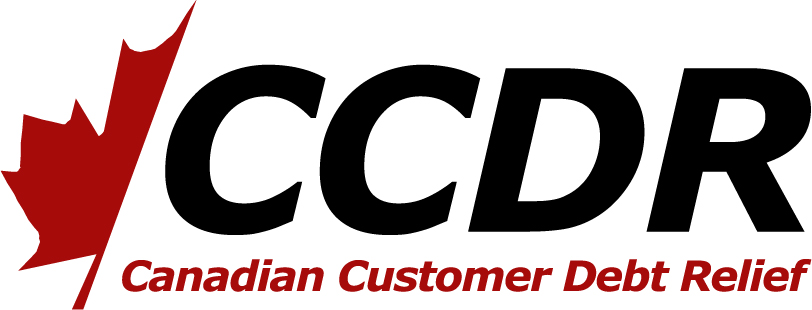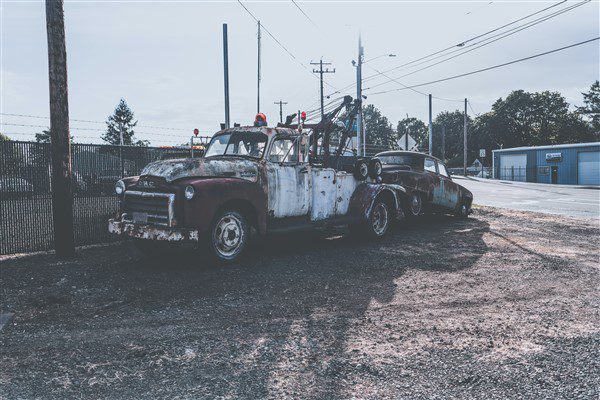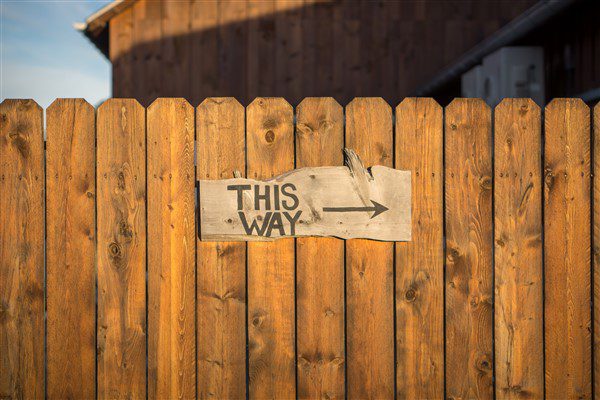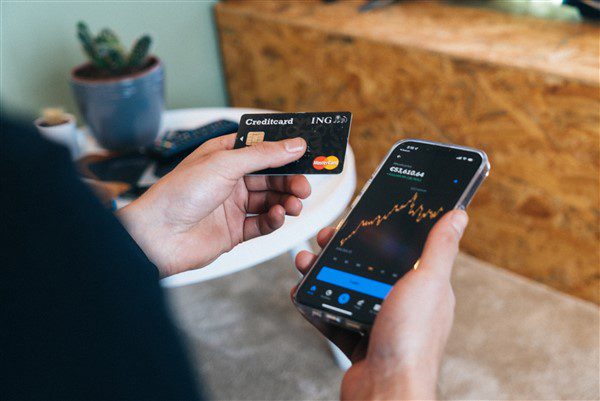Loans
Can my vehicle get repossessed in Canada?
It’s possible for your vehicle to be repossessed if you don’t make timely payments on it.
Collateral is a valuable asset that is held by the lender when you take out a loan.
It’s important to know how collateral works, because it can protect you from repossession if you default on your payments.
In this article, we’ll explain what collateral is and how it works in Canada. We’ll also discuss which types of assets are considered acceptable by lenders as collateral for loans, and cover some unique situations where repossession may occur despite having reasonable security in place.
When you purchase a vehicle, the vehicle itself acts as collateral.
When you purchase a vehicle, the vehicle itself acts as collateral. You are borrowing money from a lender and then giving them something of value to secure that loan. The lender takes possession of your car as collateral until you pay off your debt; it’s like how when you get a mortgage, they take your house until you pay off your debt.
You must be aware of who has taken ownership of this property in order to ensure that no one else can take advantage of its presence within their possession.
If you stop making payments on your loan, the bank or other lender to whom you owe the money can come and take possession of your car.
However, they must follow the rules of whatever province in which the vehicle is registered. In most provinces, lenders must give you written notice before proceeding with repossession. This notice period varies from two to ten days depending on where you live and what kind of loan product it is (for example: secured vs unsecured).
The lender cannot repossess a vehicle if it’s being used for work purposes or transporting a member of your family who has special needs; however, they may still be able to put a lien against any other property owned by that person until their debt is paid off.
Ontario has a procedure in which the lender will send a letter warning that they intend to repossess your vehicle.
If you live in Ontario, the lender must send a notice of intent to repossess your vehicle at least 15 days before the repossession. The notice must be sent by registered mail to the address of the vehicle’s owner.
If you receive such a letter and believe that your loan is still current and your payments are up to date, contact your lender immediately and ask them to cancel their plans for repossession.
You can avoid having your car repossessed by ensuring that you make all of your payments on time.
Before you can begin to deal with this possibility, it’s important to understand why your car might be repossessed. If you fail to make payments on time, the lender will often threaten repossession as a way of getting its money back. However, if you’re in default on your loan and haven’t made any payments at all in years (or even months), it’s unlikely that a lender would bother pursuing repossession; your vehicle is simply not worth enough for them to go through the trouble of reclaiming it from its current location.
On the other hand, if you have made some payments but still have an outstanding balance on the loan—or are simply behind on one or more monthly installments—then there may be grounds for your car being taken back by its creditor! Of course, this would only happen if they were able to find out where exactly their asset was located (which could be difficult considering how many people don’t file address change notifications after moving). The takeaway here? Make sure that all of your debts are paid off on time so that no one comes knocking at night with torches or baseball bats demanding their money back immediately!
It’s possible for your car to be repossessed if you don’t make timely payments on it.
If you don’t make timely payments on your vehicle, the bank can repossess it. The bank buys your car from the original lender and then resells it to recoup some of their losses.
This is why it’s important to make sure that you always pay your vehicle loan on time. If you don’t, the car could be taken away from you and sold by someone else who doesn’t care about how much money and effort went into buying it originally.
You can avoid having your car repossessed by making all of your payments on time so that no one will want to take it away from you!
Conclusion
If you’re worried about your vehicle being repossessed, it’s best to make sure that you keep up with all payments. Also, keep in mind that there are laws in Ontario that require lenders to give you a warning before they can repossess your car.
Staying out of Debt in Canada
Staying out of debt in Canada can be difficult. The credit card companies and other lenders have made it all too easy to get into the red. You may think that it is impossible to get ahead while avoiding debt traps, but there are ways to do so.
Get a copy of your credit report and make sure it is accurate.
- Get a copy of your credit report. Click Here
- Check for errors and make sure the information is correct. If it’s not, contact the credit reporting agency to get it fixed.
Keep track of your spending.
- Keep track of your spending.
- Know what you’re spending and where you are spending it.
- Use a spreadsheet or budgeting software to keep track of all your expenses, especially those that are recurring (such as rent).
- Place receipts in a folder for easy reference later on if the need arises, such as an audit or tax season.
Set up a budget and stick to it
The first step to staying out of debt is to set up a budget. A budget is a plan for your money, which will help you keep track of where it’s going and get an idea of how much money you have left over at the end of the month. You can use online tools like Mint.com or Quicken.com to create your own personal budgets, or download them from the Internet for free in Excel format.
Once you’ve created a budget and added all your expenses into it, stick to it! Instead of buying things on impulse, put aside some cash each week so that when payday comes around again (after all bills are paid), there’ll be enough left over for some fun stuff without having to borrow or charge more than planned for until next pay cheque rolls around again.”
Pay down your debts. It will build your credit rating and relieve stress.
The most important thing to do when you’re in debt is to get out of it as quickly as possible. You can do this by paying off the smallest debt first and then working on the next one. If you have multiple debts, try to pay more than the minimum payment each month so that your debts are paid off faster and you have less interest charged on them.
If your credit score is an issue for getting a mortgage or home equity line of credit, it might be worth paying off some of your smaller debts before making any large purchases like a car or house. This will not only improve your credit rating but also save money in interest charges over time. However, don’t use credit cards to pay off other credit cards because this will just lead to more debt!
Consolidate all your debt into one loan with a lower interest rate, if possible.
Consolidate all your debt into one loan with a lower interest rate, if possible.
This is the best way to get out of debt quickly and easily. Consolidating your debts means taking all of your different debts, like credit card bills and car loans, and combining them into one new loan. You’ll have one monthly payment instead of several smaller ones that are spread out over time, making it easier to budget each month. If you can consolidate all the debts into a lower-interest rate loan (usually from three percent to six percent), then this is what you should do first before doing anything else.
To find out whether or not consolidating will save you money on interest payments, go online and run some numbers for yourself using an online calculator like this one: Loan Calculator
If you have bad credit, consider a secured credit card to help rebuild your credit rating.
A secured credit card can help you rebuild your credit rating if you have bad or no credit history. You will apply for a secured card and make a deposit, which becomes your credit limit. The amount you deposit determines your interest rate and whether or not you will be approved for the card. If approved, payments are deposited directly into an account that is held by the bank until it’s paid off in full, so there are no surprises with interest or fees at renewal time.
Pros: A secure card can help establish a track record of paying bills on time and show lenders that they should consider offering regular unsecured loans in future when they see how capable YOU are at managing money responsibly.
Cons: Secured cards have higher than average interest rates compared to unsecured ones due to their riskier nature; however this may be justified if using them allows consumers access to more affordable loans down the road (especially those with low incomes). Get a Secured Credit Card
Applying for new credit cards may lower your rating, so stick with what you have.
Applying for new credit cards can lower your credit rating, so it’s best not to apply for one if you already have a lot of debt. If you do decide to apply, make sure that you are able to pay off whatever balance is on the card before the interest kicks in.
You should also keep in mind that while they can be useful tools, they can also be dangerous if misused. If you have no reason at all (like paying off medical bills or tuition), then it would probably be best not to get one right now. The same thing goes with borrowing money through a payday loan company : if there’s no need for such an expense then don’t take out a loan!
Get help from an accredited debt help agency like Canadian Customer Debt Relief. Their counsellors are trained to help you find the best solution for you, no matter where you live in Canada.
CCDR can help:
- Understand your current financial situation
- Figure out how much money is coming in and going out each month
- Understand which debts are causing problems for you (credit cards? student loans? car payments?)
- Create a plan that lets you pay off all or some of your debts over time
Conclusion
Debt can be a burden that holds you back from the life you want. It can also lead to stress and anxiety. The good news is that there are steps you can take to get out of debt and start saving money for the things you really want.
Don’t just pay the minimum payments on your Canadian Credit Cards
Introduction
When you get a credit card, you will be given the option of paying the minimum payment or a higher amount. You may not realize that if you pay just 2 percent of the balance owed each month, it could cost you hundreds or thousands of dollars more in interest than if you paid more than just the minimum amount. In this article, we’ll explain why paying more than just your minimum payment is better for your wallet and how to do it effectively so that you can save money!
Your minimum payment does not always have to be 2% of your balance.
The minimum payment is the amount you must pay on your credit card if you want to be considered in good standing with the company. It is not always the best way to pay off your debt, and it does not reduce your principle balance.
If you want to pay off your debt faster and save money in interest charges, consider paying more than this amount. For example, if you have a $2000 balance on a credit card with an 18% interest rate and you make only the minimum payment each month ($100), it would take over 2 years to get out of debt! If instead you paid $1000 per month (equivalent to 24% of the balance), then it would only take about 2 months.
You pay more interest if you just pay the minimum each month.
You pay more interest if you just pay the minimum each month.
When it comes to paying off your credit card balance, it’s tempting to just pay the minimum amount due each month, but that’s not a good idea. Why? Because minimum payments are calculated based on your interest rate—the higher your rate is, the higher your minimum payment will be. And since most credit cards have variable rates (meaning they’re tied to an index or a prime rate), those rates tend to go up when inflation rises and fall when deflation takes hold of an economy. Plus, if you don’t make any regular payments against this debt over time—which is like running up new charges on top of old ones—you’ll end up paying even more in interest than originally planned because the longer this debt remains outstanding, the more money it costs you in total cost of ownership expenses like finance charges and other fees charged by financial institutions like banks and credit unions (like transaction fees).
Minimum payments do not reduce your principle balance.
We know that it can be tempting to just pay the minimum payment on your credit card each month, but doing so will not reduce your principle balance. The minimum payment is the minimum amount you have to pay each month as a percentage of your balance. This means it will never go down because most companies calculate their minimum payments as a percentage of interest owed, not principal balance.
Minimum payments extend the term of your debt.
The problem with minimum payments is that they only cover the interest, not the principal. This means you’re only paying interest on your credit card balance and not actually reducing it. In other words, you won’t be freeing yourself from debt any time soon. You’ll just be paying more in total than if you had paid more when monthly payments were due (which is why we recommend always paying at least double your minimum).
Balance transfers are not a good option for long term debt management.
When you consider a balance transfer, think about the following:
- Balance transfers don’t reduce your principle balance. They do, however, lower your interest rate and monthly payments.
- Balance transfers are not a good option for long term debt management. The debt will still be there after the introductory period has passed, and many consumers find that they have just created another problem to solve when their introductory period ends.
- Debt consolidation is one of the most popular reasons people choose to use balance transfers on their credit cards in Canada
You can save hundreds to thousands of dollars by paying more than the minimum on your credit cards
If you’re a credit card user, there’s a chance that you have taken advantage of this interest-free period and are paying only the minimum monthly payment. But if you’re like most Canadians, there’s also a good chance that your credit card balance has remained constant since signing on for the card or getting approved for a line of credit.
If you’re currently doing nothing about your debt, consider these statistics:
- The average 2 person household has $41,500 in debt on their credit cards and lines of credit.
- The average Canadian household carries an average debt load equal to 1/3rd of their annual income (not including mortgages).
- The average Canadian owes $300,000+ on their mortgage alone!
Conclusion
The bottom line is that you should always try to pay more than the minimum amount on your credit cards. You will save money and reduce the length of time that it takes to pay off your debts. If you can’t afford to pay more than 2% of your balance, then don’t do it! Instead consider using another strategy for paying off debts such as contacting a counselor at CCDR and get a free consultation.
Avoiding Payday Loans In Canada
Payday loans are a source of quick cash that many Canadians use to get through the month. They can be convenient when you need money, but they also come with high interest rates and fees which make it hard to pay off your debt if you take one out. If you’re considering getting involved in a payday loan, here are some things you should know before making that decision:
Make Payment Arrangements With Your Creditors
When you’re faced with a problem, the first thing to do is look at your options. If you don’t have cash to pay your bills, consider working out a payment plan with your creditors.
Get on their good side by paying any interest that is due (but not yet late), and any fees, late fees or collection fees that are due but not yet charged. This could help them see you as reliable enough to extend more lenient terms when it comes time for another loan in the future (or who knows—maybe they’ll forget about this one altogether).
If you still can’t afford a loan payment after all of that, it may be time to contact a payday lender as an absolute last resort.
Use Your Tax Return To Pay Down Your Debt
- Use your tax return to pay down your debt
The first thing you should do is use your tax return to pay down your debt. As a general rule, we recommend that you do this on the highest interest rate loan first (i.e., the one with the most expensive interest rate). This way, you’re able to save money in interest charges and payments and are able to get out of debt faster!
- Get a loan from a friend or family member
If using your tax return doesn’t work for some reason, consider getting a loan from friends or family members at an interest rate that isn’t as high as payday loans but still gives them some income for helping you out. We recommend checking with them first before going anywhere else because they may be willing to lend money without charging any fees at all! You can also try asking around through social media if anyone has any extra cash lying around instead of taking out an expensive loan just yet.
- Use A Credit Card To Pay Down Your Debt
If you can’t get a loan from friends or family members, try using your credit card to pay down your debt. This may be the only option left for some people who don’t want to take out an expensive loan just yet because they don’t have any other way of paying it back before their next payday comes around.
There are a lot of things you can do to keep from getting involved in a payday loan.
If you’re thinking about getting a payday loan, then there are some things you should know about them. First of all, if your friend asks for money and tells you that they will pay it back next week with their paycheck, don’t lend them any cash. This is what most people do by mistake when using payday loans because they think they’ll be able to pay it back after receiving their next paycheck. The problem is that these loans usually have very high interest rates attached to them which means that the amount due will keep growing every month until it becomes unbearable and/or impossible to pay off without taking out another loan or selling something valuable (like your car).
Instead of borrowing money from friends or family members who may not be able to afford giving out cash right now (and who would rather see other people succeed), ask for help from a professional financial advisor at www.ccdr.ca who specializes in helping people with debt problems like yours!
5 Facts You Must Know When Applying For a Loan
APPLYING FOR A SECURED LOAN WITH BAD CREDIT
Having bad credit history can be like carrying a backpack full of worries. You don’t only have to face the elevated rates on credit cards and loans, but acquiring any type of credit can seem like an unbearable obstacle to overcome. Some people with bad credit think that all odds are against them when trying to apply for credit or loans. However, there are those who are willing to take the plunge in risky waters for you provided that you pay them back in the end. Secured loans use an item of monetary value as a safe keep known as collateral. The information that follows has reference to requesting a secured loan with w/unfavorable credit.
SECURED LOANS
Secured loans use personal property to secure the repayment of a loan. This means that the possibilities of getting a secured loan with bad credit are much higher than an unsecured loan. Their characteristics are that of being much more common and have lower interest rates. The interest rate that accompanies a secured loan depends on the value of the collateral being used and its´ place in the stock exchange should the lender have to sell it.
COLLATERAL
A kaleidoscope of items can be used as collateral for a secured loan. But those that have a higher monetary value than the loan amount itself tend to be the best collateral. Some items that are purchased with loans serve as their own collateral as in the case with a mortgage and automotive loans. Nonmaterial collateral such as capital built up in real estate often fulfills the duties for better collateral for a secured loan than any other item.
SHOPPING FOR A LOAN
It’s just as important to look around for a secured loan as it is to get a second opinion from a doctor. When shopping around for a secured loan, the following suggestions should never be overlooked. *Take the time to investigate different banks, finance companies, and lenders in your area who offer the best interest rates or loans. *Online lenders which can often feature better interest rates *Once you have all the information, make comparisons to see which loan suits you the best.
APPLYING FOR YOUR LOAN
Once you’ve found your loan, the application must be submitted. Even though a great-looking shoe doesn’t always secure a perfect fit, it’s essential to have other proposals at hand. If all fails and you still haven’t found your match, it may be time to expand your horizons & undertake other options to facilitate the quest for the best loan that suits your needs.




